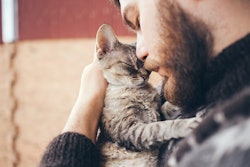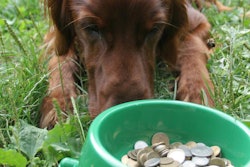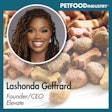
Consumption of pet food in the Philippines is at an all-time high, thanks to an increasing number of pet owners with higher appreciation and willingness to spend more for modern pet diets.
Research firm Euromonitor International estimates that 13.6 million dogs and 1.8 million cats comprised the “universe of pets” in the Philippines from September 2015 to August 2016. As these numbers steadily increase, pet food companies big and small expect their sales to grow in 2017.
To accommodate the market's price sensitivity, pet food suppliers offer inexpensive local and imported brands that retail by the kilogram or less. Doing so opened the market to more pet owners from the budget class that are steadily switching from rice to kibble.
The Philippines is currently the sixth-biggest rice consumer in the world and, by extension, pets here eat rice mixed with cooked protein. As of August 2017, a kilogram of well-milled rice cost only US$0.82. Add meat and a kilo of dog's rice meal becomes more expensive than the cheapest kilogram of a locally manufactured adult dog food, at US$1.00, or the most affordable imported cat food, at US$1.81. With lower costs and more convenience, commercial pet food is winning converts, especially among young pet owners.
Recent data from the Philippine Statistics Office also help illustrate a decline in the amount of rice each Filipino household feeds to their pets annually. For 2017, the agency projects that an average household will consume 11.26 kilograms of rice, either leftover or purposely cooked for pets. In 2016 and 2010, the average rice consumption of pets per household were 16.63 kilograms and 18.42 kilograms, respectively.
An emerging pet food market with high growth potential
Euromonitor considers the Philippines an emerging market for pet food that will register at least 10 percent growth in 2017. But they also noted a highly cost-conscious market looking for economical yet quality dry food.
In terms of monthly budget, a household with at least two pets generally allots up to US$59.00 for pet food alone, a November 2016 survey by the online magazine MetroPets showed.
Pet owners also prefer to buy pet food made in the US or European Union countries.
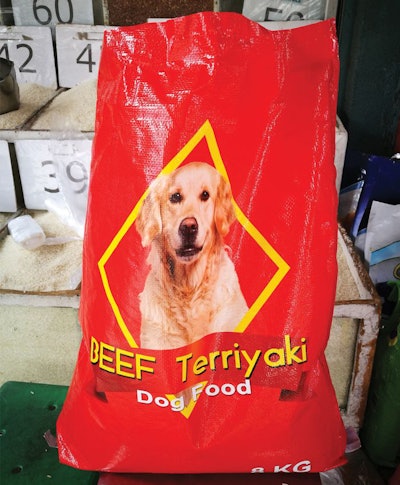
The Philippine pet food market is competing with the rice market, as rice is a traditionally inexpensive way to feed pets in the country. However, as pet owners see that it can be more cost effective to buy commercially prepared pet food versus mixing rice and a protein at home for their pets, pet food manufacturers are gaining ground. | Photo by Alma Buelva
The US has been a dominant exporter of pet food to the Philippines since 2012, with a 61 percent market share based on information from the US Department of Agriculture (USDA). It estimates US pet food exports to the Philippines at US$36.6 million in 2017 and US$40 million in 2018. The report also said most Filipino pet owners are thrifty, so they buy the cheaper varieties of pet food.
Purina Philippines, which targets premium and superpremium pet food buyers, said that the market is bigger at the bottom, dominated by brands that sell kibble for US$2.00 or less a kilogram. However, Purina said it believes more Filipinos are now willing to spend a little more for premium pet food that meets their pets' average nutritional requirements.
In MetroPets' survey, US brands Pedigree, Royal Canin, Alpo, Holistic and Beef Pro are the most saleable, along with Vitality from Australia and Monge's Special Dog from Italy. All fall under the premium to superpremium categories, but pet shops also sell Beef Pro and Special Dog for US$1.82 and US$1.85 a kilogram, respectively, to tap the mass market.
Acana and other ultra-premium brands like Orijen and Science Diet definitely have their work cut out for them. For the budget-conscious, a 10-kilogram bag of Special Dog for US$16.70 versus an 11.4-kilogram bag of Acana for around US$59.00 is hard to beat.
Mars Philippines, on the other hand, seems to have found the market's sweet spot by offering a wide range of dry and wet pet food at different price points for pet owners from various income groups. Euromonitor expects the local office of Mars Petcare to keep its market leadership in 2017.
Dry pet food winning for dogs in the Philippines
The Philippines has more pet dogs than cats, so the market is clearly dog-oriented and one that prefers dry food over wet food, pet shop owners said.
A November 2012 report from the Atlantic.com cited the Philippines as the “dog capital of East Asia,” with one pet dog for every eight people.
The Philippine Canine Club Inc., a local registry for pure-bred dogs with nearly 21,000 individual members, registered 70,426 purebred dogs in 2016. To date, it has registered almost 1.1 million purebred dogs in its studbook. Per club's record, the most popular purebred in the Philippines is the Shih Tzu, followed by the Chihuahua and the Pomeranian.
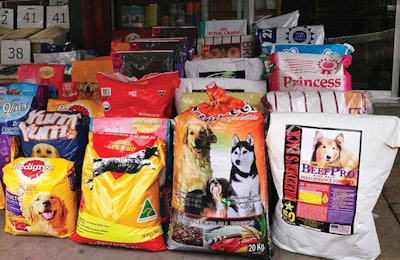
The current pet food market in the Philippines is bigger at the bottom, dominated by brands that sell kibble for US$2.00 or less per kilogram. | Photo by Alma Buelva
Most market data, however, usually don't account for the biggest group of dogs in the Philippines — the native breed known as Aspins. Short for Asong Pinoy (Philippine Dog), Aspins are either family pets or strays. Most dogs in local shelters are Aspins.
Lately, pet shop owners said foreigners have taken a liking to the humble-looking but spunky Aspin, whose improving image as a family pet may one day trigger a bigger market boom for dry dog food.
As for wet food, store owners said many prefer to buy it only as a supplement for dry food to whet a dog's appetite, especially if it becomes sick.
Wet food comes out on top for the Philippines’ cats
Although dog food outsells cat food in the Philippines, ailurophiles here are more particular about quality than price. Pet shop owners said cat lovers tend to pamper their felines with “human-grade” wet food available in small cans or pouches. Those are expensive as treats, but cat owners reason that cats are only small eaters anyway. They are also opening their wallets for high-end dry cat food that promises more health benefits.
Euromonitor sees no significant change in the Philippine cat food market space in 2017. Mars Philippines is still poised to keep its 2016 lead with a value share of 48 percent. Mars' widely distributed Whiskas product, both wet and dry, dominates the mid-priced cat food market.
Monge's Special Cat, however, disrupted the local market for affordable dry cat food in 2016 by blasting competition from established US brands like Cuties Catz and Princess. Made specially for the Philippine market, Special Cat continues to be a highly sought product that sells for US$13.67 for a 7-kilogram bag.
A diverse segment of retail channels
Supermarkets and groceries fill up their shelves with popular brands, usually from Mars and Purina, along with their own private label with lower price tags. The rest of the market players distribute through pet shops, veterinary clinics and pet cafes, or they sell directly to established breeders.
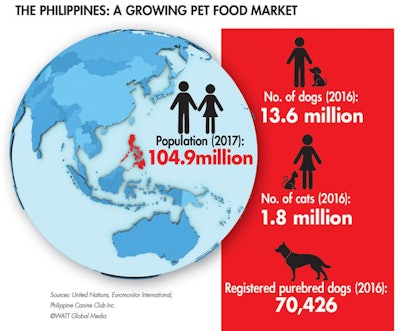
Almost everyone now has an online store or sells via a big online shop operator. A number of mom-and-pop online shops also fight for market share by providing a more personal level of customer service.
Is the Philippine market getting saturated? Some pet food companies think so, which could be true in metro Manila, the largest urban area surrounding the capital. With an estimated 12 million people, it is the center of everything, especially commerce and housing, and where most people with enough disposable income to take care of pets live.
But there are 11 other metropolitan areas all over the country of 7,641 islands, each with demand and opportunities just waiting for pet food companies to meet and exploit.
Alma Buelva is a journalist from the Philippines. When she's not writing about business and technology, she devotes her time taking care of animals and writing about them, too.
Raw pet food in the Philippines
The search for affordable options with promising health benefits probably led many Filipino pet owners to try raw feeding. This is something that's gathering steam at the moment, especially among dog owners.
In social media, the biggest local group that promotes raw feeding for dogs now has 26,230 members. A similar group for cats has 2,700 members to date.
They advocate the whole prey method that entails feeding pets with uncooked meat, usually chicken, pork legs or offal. They use the pet's body weight to determine how many times and how much raw meat it needs to eat.
Raw feeding is also good business for enterprising pet lovers that pack and sell chopped up meat, some with vegetables added. There are also veterinary clinics that promote raw feeding and sell ready-to-serve meat in plastic bags.


